Etidronic Acid (HEDP) Supplier
Etidronic acid (HEDP) is a type of phosphonate and is a member of the class of organic compounds known as hydroxyalkylidene diphosphonic acids.
It has the chemical formula C₂H₈O₇P₂ and features two phosphonic acid groups, making it highly effective as a chelating agent.
Our etidronic acid has the following features:
- Liquid Form
- ≥ 50% Purity Levels
- 1.20 g/cm³–1.30 g/cm³
- Wide pH Range
- Custom Packaging Options
Main Parameters of Our Etidronic Acid Liquid
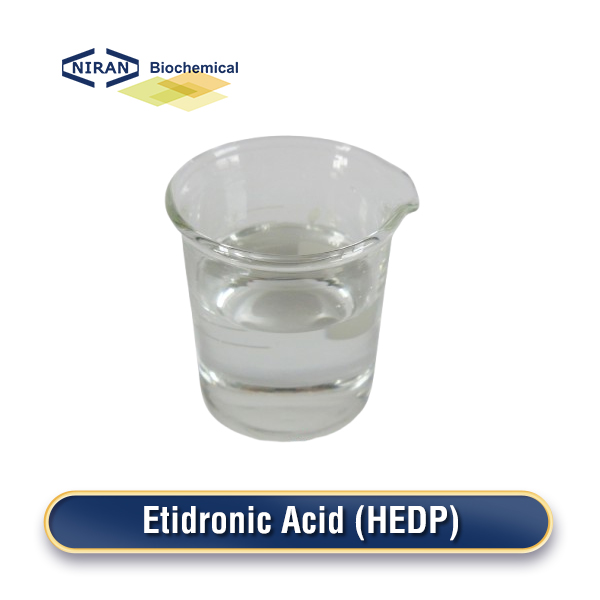
| Items | Standards |
| Assay (HEDP content) | ≥ 50% |
| pH (1% solution) | 2.0 – 3.0 |
| Density (20°C) | 1.20 g/cm³– 1.30 g/cm³ |
| Free Phosphoric Acid | ≤ 0.5% |
| Chloride (Cl-) | ≤ 0.05% |
| Iron (Fe) | ≤ 0.001% |
Functions of Etidronic Acid
Chelating Agent
- It binds to metal ions, preventing scale formation by forming stable complexes with calcium, iron, and other metals.
Scale Inhibitor
- It’s used to prevent the formation of mineral scales in systems like water treatment and industrial cooling systems.
Corrosion Inhibitor
- It helps to protect metal surfaces, especially in water-based systems, forme a protective layer on the metal to reduce rusting & corrosion.
Dispersant
- Helps in preventing the aggregation of suspended particles in water, improving the efficiency of cleaning processes and preventing sludge build-up.
Cleaning Agent
- It is utilized in cleaning formulations to remove scale and metal oxides from equipment surfaces, especially in industries like oil and gas.
Water-softening Agent
- It can act as a water-softening agent, improving detergent efficiency by preventing calcium and magnesium ions from interfering.
Etidronic Acid Applications
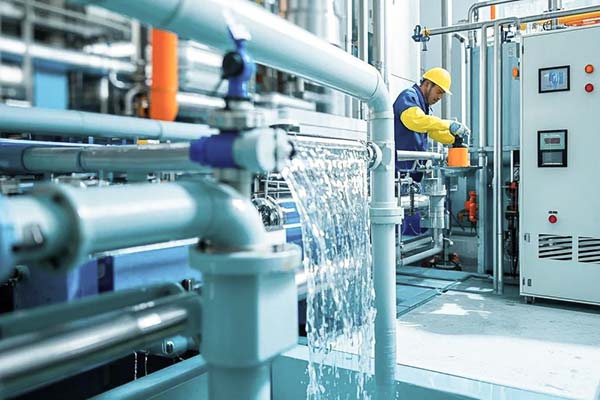
Water Treatment
- Used to prevent scale formation in water systems, improving water quality by chelating metal ions and inhibiting deposits.
- 5 ppm – 20 ppm recommended dosage.
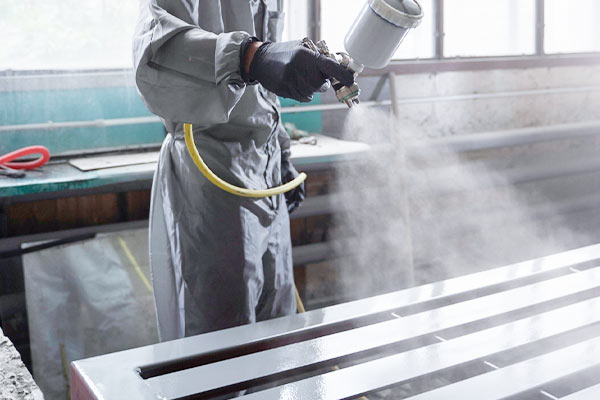
Corrosion Inhibition
- Etidronic acid helps protect metal surfaces from rust and corrosion by forming protective films on metal surfaces.
- 0.1% – 5% recommended dosage
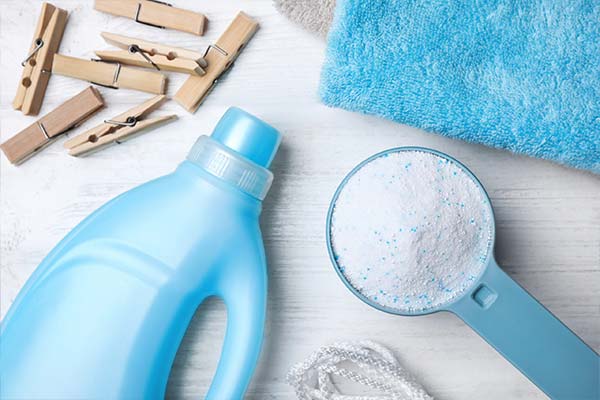
Detergents
- Acts as a dispersant in detergents, preventing mineral buildup and enhancing cleaning efficiency by binding to water hardness ions.
- 0.5% – 3% recommended dosage.

Oilfield Chemicals
- Etidronic acid aids in preventing scale deposits and corrosion in oilfield operations, enhancing the performance of drilling fluids.
- 1% – 5% recommended dosage.
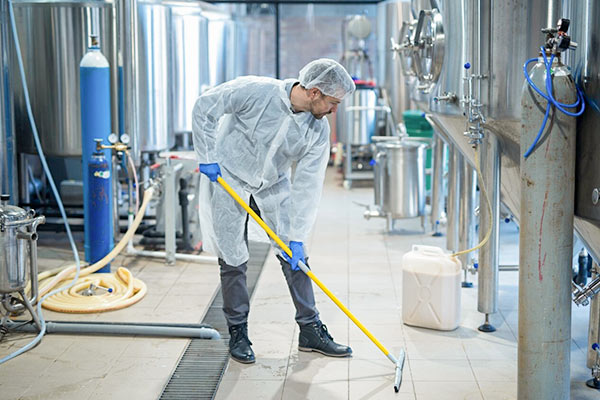
Industrial Cleaning
- Acts as a powerful chelating agent, removing metal ions and improving the efficiency of industrial cleaning agents.
- 1% – 5% recommended dosage.
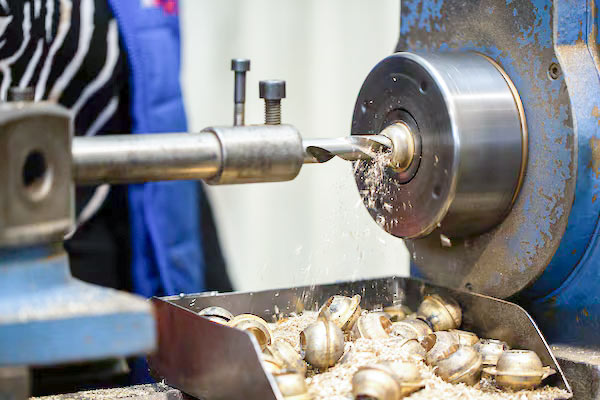
Metal Processing
- Used to prevent scale formation and corrosion during metal processing, improving the longevity and quality of machinery and parts.
- 0.1% to 1% recommended dosage.
GET FREE SAMPLES
FAQs
1.What is Etidronic Acid (HEDP)?
Etidronic Acid, also known as HEDP (Hydroxyethylidene Diphosphonic Acid) or 1-Hydroxyethylidene-1,1-diphosphonic acid, is a chelating agent commonly used in water treatment, detergent formulations, and industrial applications.
2.What is the difference between Etidronic Acid (HEDP) and other phosphonic acids?
HEDP has a hydroxyethyl group attached to its structure, making it more effective as a dispersing agent and corrosion inhibitor compared to other phosphonic acids like phosphoric acid.
3.How does Etidronic Acid (HEDP) prevent scale formation?
HEDP works by binding with calcium, magnesium, and other metal ions in water, preventing them from crystallizing and forming scale deposits.
4.Is Etidronic Acid (HEDP) effective at high or low pH levels?
HEDP is effective in a wide pH range, typically from 4 to 7, making it useful in various industrial applications.
5.What is the typical concentration of Etidronic Acid (HEDP) used in water treatment?
In water treatment, concentrations typically range from 5 to 20 parts per million (ppm) depending on the specific application and system.
6.What are the potential environmental impacts of Etidronic Acid (HEDP)?
While HEDP is biodegradable, if large quantities are released into water systems, it could have an adverse impact on aquatic ecosystems by disturbing the natural ionic balance. Proper disposal methods should be followed.
7.What is the shelf life of your Etidronic Acid (HEDP)?
Our HEDP typically has a shelf life of 2 years when stored properly in a cool, dry place away from direct sunlight.
